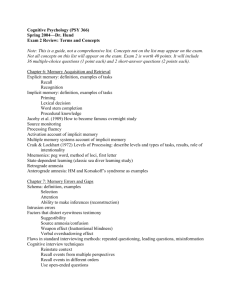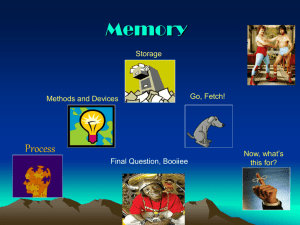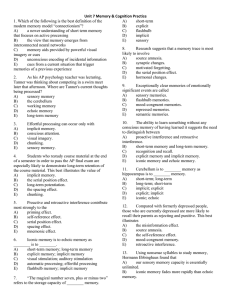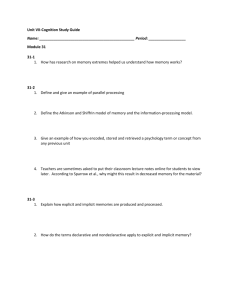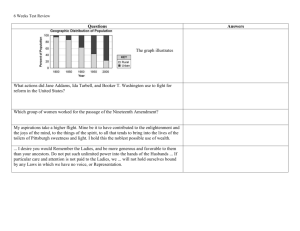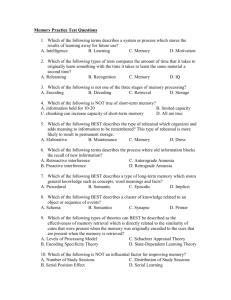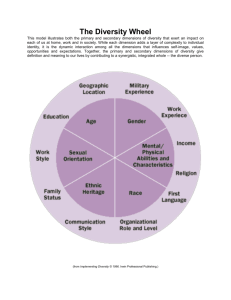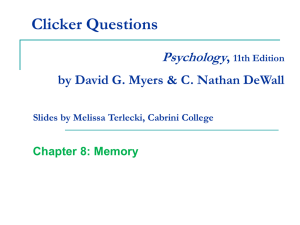Chapter 9 Practice Questions
advertisement
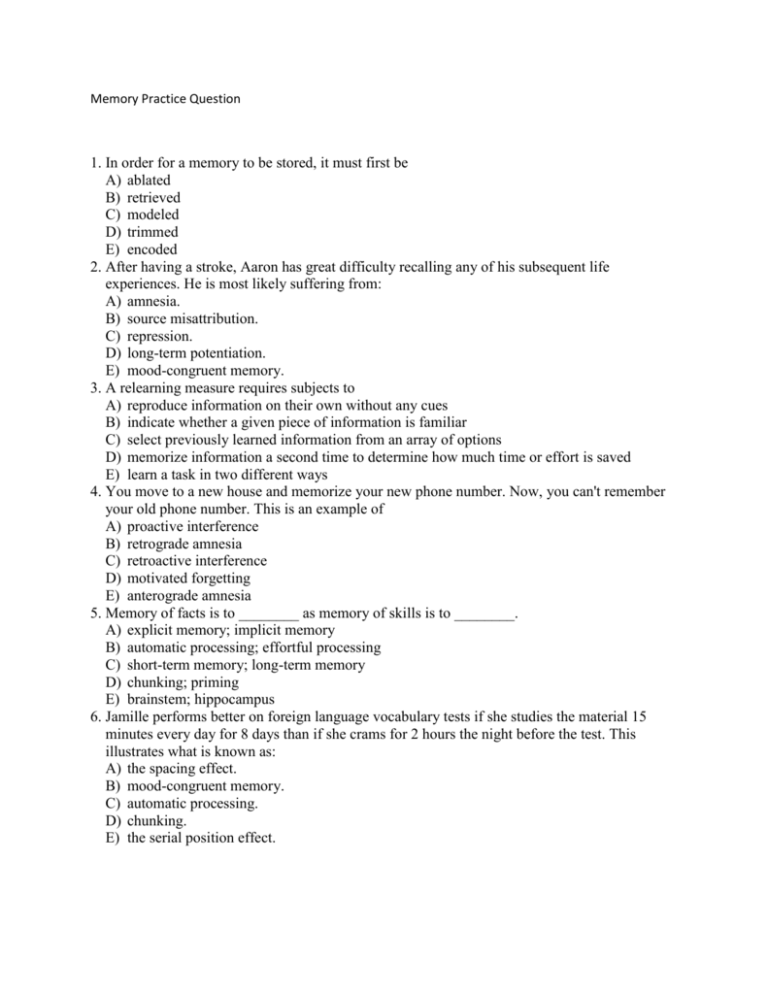
Memory Practice Question 1. In order for a memory to be stored, it must first be A) ablated B) retrieved C) modeled D) trimmed E) encoded 2. After having a stroke, Aaron has great difficulty recalling any of his subsequent life experiences. He is most likely suffering from: A) amnesia. B) source misattribution. C) repression. D) long-term potentiation. E) mood-congruent memory. 3. A relearning measure requires subjects to A) reproduce information on their own without any cues B) indicate whether a given piece of information is familiar C) select previously learned information from an array of options D) memorize information a second time to determine how much time or effort is saved E) learn a task in two different ways 4. You move to a new house and memorize your new phone number. Now, you can't remember your old phone number. This is an example of A) proactive interference B) retrograde amnesia C) retroactive interference D) motivated forgetting E) anterograde amnesia 5. Memory of facts is to ________ as memory of skills is to ________. A) explicit memory; implicit memory B) automatic processing; effortful processing C) short-term memory; long-term memory D) chunking; priming E) brainstem; hippocampus 6. Jamille performs better on foreign language vocabulary tests if she studies the material 15 minutes every day for 8 days than if she crams for 2 hours the night before the test. This illustrates what is known as: A) the spacing effect. B) mood-congruent memory. C) automatic processing. D) chunking. E) the serial position effect. 7. The psychologist Jean Piaget constructed a vivid, detailed memory of being kidnapped after hearing his nursemaid's false reports of such an event. His experience best illustrates: A) proactive interference. B) mood-congruent memory. C) implicit memory. D) source amnesia. E) the self-reference effect. 8. Words, events, places, and emotions that trigger our memory of the past are called: A) iconic traces. B) schemas. C) retrieval cues. D) context effects. E) déjà vu. 9. Joshua vividly recalls his feelings and what he was doing at the exact moment when he heard of his grandfather's unexpected death. This best illustrates: A) the serial position effect. B) sensory memory. C) flashbulb memory. D) acoustic encoding E) the next-in-line effect. 10. Remembering how to solve a jigsaw puzzle without any conscious recollection that one can do so best illustrates ________ memory. A) semantic B) flashbulb C) sensory D) explicit E) implicit 11. Research on memory construction indicates that memories of past experiences are likely to be: A) difficult to retrieve but never completely lost. B) distorted by our current assumptions. C) be repressed if not rehearsed. D) retrieved in the very same form and detail as they were originally encoded. E) much more vivid if they are seldom rehearsed. 12. Using the mnemonic ROY G. BIV to remember the colors of the rainbow in the order of wavelength illustrates the use of: A) flashbulb memory. B) the spacing effect. C) the method of loci. D) an acronym. E) the “peg-word” system. 13. The inability to remember how Lincoln's head appears on a penny is most likely due to a failure in: A) encoding. B) iconic memory. C) retrieval. D) implicit memory. E) storage. Answers: E, A, D, C, A, A, D, C, C, E, B, D, A,
